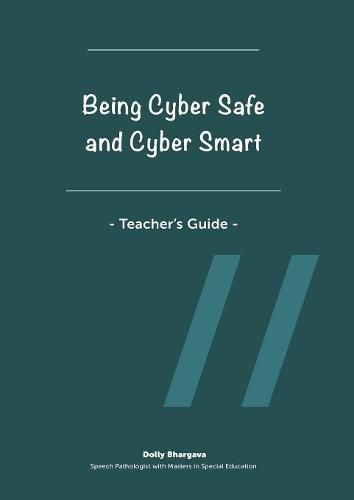Readings Newsletter
Become a Readings Member to make your shopping experience even easier.
Sign in or sign up for free!
You’re not far away from qualifying for FREE standard shipping within Australia
You’ve qualified for FREE standard shipping within Australia
The cart is loading…






This title is printed to order. This book may have been self-published. If so, we cannot guarantee the quality of the content. In the main most books will have gone through the editing process however some may not. We therefore suggest that you be aware of this before ordering this book. If in doubt check either the author or publisher’s details as we are unable to accept any returns unless they are faulty. Please contact us if you have any questions.
Technology has resulted in exciting new ways for students to communicate, learn, socialise, stay informed, entertain and foster creativity, it also has a dark side. Technology has given rise to endless new ways bullies can threaten, harass, abuse and insult others. This type of bullying is called cyberbullying, Cyber bullying has the potential to reach a wider audience than typical schoolyard bullying.
Nasty, mean or threatening messages, emails, photos or video clips can be forwarded to all the student’s contacts and websites can be created that can be visited by millions of people. There is often no escape for cyber victims, who can be bullied anywhere at any time. Cyberbullying can be devastating for victims and their families. Whilst they generally take a psychological form rather than a physical form, the consequences are just as bad, if not worse, than those associated with traditional bullying, and cyberbullying can have more negative long term effects. Psychological harm inflicted by cyberbullying may be reflected in low self-esteem, loneliness, insecurity, school failure, anger, anxiety, depression, school avoidance, school violence and, in extreme cases, suicide.
As educators we can help our students avoid the pitfalls of technology and deal with any problems that may arise. The teacher’s guide shows you how to use the Being Cyber Safe and Cyber Smart - Student Workbook activities to help teach your primary students (Yr 3 onwards) to recognise cyberbullying, and learn what they should do if they encounter cyberbullying .
$9.00 standard shipping within Australia
FREE standard shipping within Australia for orders over $100.00
Express & International shipping calculated at checkout
Stock availability can be subject to change without notice. We recommend calling the shop or contacting our online team to check availability of low stock items. Please see our Shopping Online page for more details.
This title is printed to order. This book may have been self-published. If so, we cannot guarantee the quality of the content. In the main most books will have gone through the editing process however some may not. We therefore suggest that you be aware of this before ordering this book. If in doubt check either the author or publisher’s details as we are unable to accept any returns unless they are faulty. Please contact us if you have any questions.
Technology has resulted in exciting new ways for students to communicate, learn, socialise, stay informed, entertain and foster creativity, it also has a dark side. Technology has given rise to endless new ways bullies can threaten, harass, abuse and insult others. This type of bullying is called cyberbullying, Cyber bullying has the potential to reach a wider audience than typical schoolyard bullying.
Nasty, mean or threatening messages, emails, photos or video clips can be forwarded to all the student’s contacts and websites can be created that can be visited by millions of people. There is often no escape for cyber victims, who can be bullied anywhere at any time. Cyberbullying can be devastating for victims and their families. Whilst they generally take a psychological form rather than a physical form, the consequences are just as bad, if not worse, than those associated with traditional bullying, and cyberbullying can have more negative long term effects. Psychological harm inflicted by cyberbullying may be reflected in low self-esteem, loneliness, insecurity, school failure, anger, anxiety, depression, school avoidance, school violence and, in extreme cases, suicide.
As educators we can help our students avoid the pitfalls of technology and deal with any problems that may arise. The teacher’s guide shows you how to use the Being Cyber Safe and Cyber Smart - Student Workbook activities to help teach your primary students (Yr 3 onwards) to recognise cyberbullying, and learn what they should do if they encounter cyberbullying .